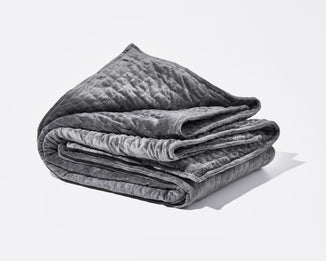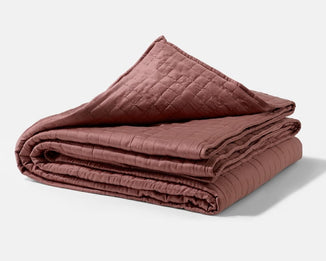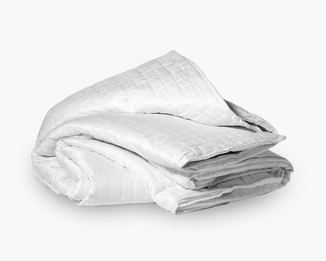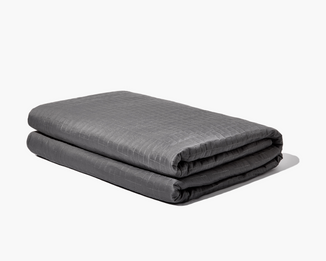
May 23, 2023
How to Use Red Light Therapy for Pain

Red light therapy — which we’ll also call infrared therapy — is a non-invasive treatment that uses specific wavelengths of light to penetrate the skin and tissues, promoting healing and reducing inflammation. This therapy has been around for decades, and its origins in pain management can be traced back to NASA’s research on using LED lights for wound healing in space.
Unlocking the healing power of red light therapy can be a game-changer for those dealing with chronic pain, as it offers a natural and drug-free alternative to traditional pain management methods. But gaining a better understanding of its potential is just the first step. To effectively use red light therapy for pain relief, knowing the proper techniques, equipment and protocols is important. In this comprehensive guide, we will cover everything you need to know about how to use red light therapy for pain — from choosing the right device to developing a personalized treatment plan. Whether you’re new to red light therapy or a seasoned user, this guide will provide you with the knowledge and tools to make the most of this powerful pain management technique.
Understanding the Terminology
It’s important to understand that the terms “red light therapy” and “infrared therapy” do have some differences. Regular red light has a longer wavelength than infrared light, meaning it can only penetrate the surface of the skin and is primarily used for skin treatments like reducing the appearance of wrinkles and promoting collagen production. On the other hand, infrared light has a shorter wavelength, allowing it to penetrate deeper into the body’s tissues, making it more effective for pain relief and healing.
However, in practice, the terms “red light therapy” and “infrared therapy” are often used interchangeably, and many devices marketed for “red light therapy” actually emit both red and infrared light. We will use the terms “red light therapy” and “infrared therapy” interchangeably, as the principles behind their use for pain management are similar.

Infrared Sauna Blanket: Relief at Home
The Science Behind Red Light Therapy
Bear with us while we get technical for a moment, but understanding the science behind red light therapy can help you see why it’s such a powerful tool for pain management and healing. Red light therapy works by stimulating the mitochondria, the powerhouses of our cells that produce ATP, the energy currency of the body. When red and near-infrared light penetrates the skin and reaches the mitochondria, it triggers a process called photobiomodulation.
During photobiomodulation, the light energy is converted into chemical energy, which the mitochondria use to produce more ATP. This increased ATP production gives cells the energy they need to function optimally, repair damage and promote healing. Additionally, photobiomodulation has been shown to increase nitric oxide production, which dilates blood vessels and improves circulation, further supporting the body’s natural healing processes.
Red light therapy has also been found to have anti-inflammatory effects, which can be particularly beneficial for those with chronic pain. Studies have shown that red light therapy can reduce the production of inflammatory cytokines, which play a role in pain and inflammation. Additionally, red light therapy has been found to promote collagen production. This protein supports the body’s connective tissues and can help to reduce pain and stiffness.
The science behind red light therapy is still being explored, but the evidence so far suggests that it can be a powerful tool for promoting healing, reducing inflammation and managing pain. So whether you suffer from chronic pain, injury or simply want to improve your overall health and wellness, red light therapy may be worth considering as a natural, non-invasive treatment option.

Using Red Light Therapy for Different Types of Pain
From chronic conditions like arthritis and fibromyalgia to acute injuries like sports strains and dental pain, red light therapy offers a wide range of potential benefits for pain relief. Whether you’re dealing with back pain, migraine headaches or menstrual cramps, red light therapy may be a promising treatment option to consider.
Here are some common conditions where it can be useful:
- Chronic pain – When managing conditions like arthritis and fibromyalgia, red light therapy may help reduce inflammation, improve circulation and accelerate healing, providing relief for those struggling with chronic pain conditions.
- Acute pain – Whether it’s a sports injury or muscle strain, red light therapy may help reduce swelling and inflammation, promoting faster recovery and alleviating pain from injuries or muscle strains.
- Dental pain management – When dealing with dental pain such as toothaches and post-extraction discomfort, red light therapy can reduce inflammation and promote tissue repair, resulting in less throbbing pain so you can get back to living your life.
- Headache and migraine pain relief – Infrared therapy can help alleviate tension headaches and migraines by improving circulation, reducing inflammation and relaxing muscles.
- Nerve pain and neuropathy – For individuals suffering from nerve pain and neuropathy, red light therapy offers the potential to reduce pain and improve nerve function. This is particularly important for those dealing with damaged or malfunctioning nerves.
- Back pain and sciatica – Find relief through red light therapy, which can help alleviate lower back pain and sciatica by reducing inflammation and promoting healing. This therapy offers a non-invasive and drug-free alternative to traditional back pain management methods, around which much controversy exists.
- Menstrual pain and cramps – Menstrual pain and cramps can be debilitating for many women. Red light therapy can provide relief by reducing inflammation and promoting relaxation in the pelvic muscles.
- Carpal tunnel syndrome and wrist pain – These conditions can be caused by various factors, such as repetitive motion or injury. Red light therapy may provide relief by reducing inflammation and promoting healing in the wrist. This non-invasive treatment has the potential to alleviate pain and discomfort, helping you regain your quality of life.
- Neck and shoulder pain – This pain can be caused by a variety of factors, including poor posture and tension. Infrared light therapy can help alleviate this pain by reducing inflammation, improving circulation and promoting muscle relaxation.

Calming Heat Back Wrap: Soothe Lower Back Pain with Ease
Special Populations and Situations
In addition to the general population, red light therapy can also provide pain relief for special populations and situations. These include:
- Pregnancy – While pregnant women should always consult a healthcare professional before starting any new treatment, red light therapy has been used to manage pain during pregnancy, such as lower back pain and joint discomfort. It’s important to ensure the safety of both the mother and the unborn baby, so again, consulting with a healthcare professional is a must.
- Pediatric Pain Management – Red light therapy can be a safe, non-invasive option for managing pain in children, but always consult with a pediatrician before starting treatment. As with any medical treatment, it’s important to ensure the safety of the child and to seek professional guidance.
- Elderly Individuals – Infrared light therapy can help alleviate age-related pain, such as arthritis, by reducing inflammation and promoting tissue repair. This can provide significant relief for elderly individuals who may be struggling with chronic pain and other age-related conditions.
- Veterinary Medicine – Red light therapy has been successfully used in veterinary medicine to manage pain in animals, such as dogs and horses, suffering from arthritis or injuries. This non-invasive treatment can provide relief for animals in pain and can be a viable alternative to traditional pain management methods.
Combining Red Light Therapy with Other Techniques and Treatments
Integrating red light therapy with other treatments and techniques can enhance its effectiveness, providing even greater relief for those struggling with pain. Here are some examples:
- Post-Surgery Pain Management – Combining red light therapy with standard post-surgery care can help reduce inflammation, promote healing and accelerate recovery. This can be a great option for those who are recovering from surgery and looking for natural ways to manage pain.
- Nutrition and Supplementation – Nutrition and supplements are important for managing pain because certain nutrients can help alleviate chronic pain through the management of inflammation via oxidative stress, and a balanced diet has a positive effect in reducing chronic pain. Additional red light therapy may provide a more holistic approach, boosting the effects of supplements and improving nutrient absorption.
- Post-Workout Recovery – Incorporating red light therapy into your post-workout routine can help reduce muscle soreness and inflammation, promoting faster recovery. This can be a great option for athletes or fitness enthusiasts who are looking to speed up their recovery time and reduce pain. You can use it alongside massage therapy, acupuncture and other treatments to speed up recovery and get back to training faster than before.
- Sleep Disorder Therapy – A weighted blanket can help with better sleep and sleep disorders like insomnia by calming the heart rate and breathing, which prepares the body for rest. Red light therapy can also be helpful for people with insomnia and circadian rhythm sleep disorders, so it is possible that the calming effects of both therapies could work together to promote better sleep.
- Daily Pain Management Routine – By combining gentle exercise, stretching, meditation and relaxation techniques with regular red light therapy sessions, you may experience enhanced pain relief and greater overall physical and mental health. The natural, drug-free nature of red light therapy makes it a particularly attractive option for those seeking an alternative to prescription medications or other traditional pain management methods. Plus, the convenience of at-home red light therapy devices makes it easy to incorporate into a daily routine.
Choosing the Right Red Light Therapy Device for Pain Relief
When it comes to choosing a red light therapy device for pain relief, there are various options available on the market. Here are three popular devices to consider:
- Infrared Sauna Blanket – This portable, at-home device provides a full-body treatment. It uses infrared light to penetrate the skin and tissues, relieving pain for various conditions. An infrared sauna blanket is a great option for those seeking a relaxing, full-body experience.
- Portable Infrared Back Wrap – A portable infrared back wrap can be a game-changer for those suffering from back pain. This device wraps around the lower back and uses infrared light to reduce inflammation and promote healing. This calming heat back wrap is portable and can be used on the go, making it a convenient option for those with a busy lifestyle.
- Infrared Heat Pad – An infrared heat pad is another at-home option for pain relief. It uses infrared light to penetrate deep into the tissues, providing targeted relief for a range of conditions, including menstrual cramps, arthritis and muscle pain. This device is convenient and easy to use, making it a popular choice for those seeking at-home pain relief.
When choosing a red-light therapy device, consider the device’s size, portability and power output. Additionally, make sure to choose a device with a proven track record and FDA clearance. Considering these factors, you can select the best device for your specific needs and maximize the benefits of red light therapy for pain relief.
At-Home vs. Professional Red Light Therapy for Pain Management
When it comes to using red light therapy for pain relief, you can self-administer treatments with at-home devices or seek professional treatment. At-home devices offer convenience, allowing you to administer treatments at your own pace and on your own schedule. They are also often less expensive than professional sessions, making them a more budget-friendly option for those seeking pain relief.

On the other hand, professional red light therapy sessions may provide a more comprehensive treatment plan. A healthcare provider can tailor treatments, as well as monitor your progress and adjust as necessary. Since they are generally more expensive than at-home devices, you can see if professional sessions are covered by insurance. Otherwise, you may want to consider the use of at-home devices with healthcare professional consults to achieve pain relief without breaking the bank.
Unlock the Restorative Power of Red Light Therapy
Red light therapy is a promising treatment option for those seeking a natural and drug-free alternative to traditional pain management methods. With its ability to reduce inflammation, promote tissue repair and manage pain in various conditions, red light therapy is a versatile tool for promoting healing and overall wellness. By choosing the right device for your needs and considering the option of professional treatment, you can maximize the benefits of red light therapy and unlock its potential as a powerful pain management tool.
Image Credits
Labib Retroman/Shutterstock.com
Your use of this website, its content, and any products obtained through this website is at your own risk. This website, its content, and any products obtained through this website are provided on an “as is” basis, without any warranties of any kind, either express or implied, including warranties of merchantability, infringement of intellectual property, or fitness for any particular purposes. No warranty or representation is made with respect to the completeness, reliability, quality, or accuracy of this website or its content. This website, its content, and any products obtained through this website do not constitute medical treatment and is not a substitute for a medical examination or diagnosis. If you are dealing with a health condition check with your health care provider before using. This website may contain affiliate links that allow us to earn a commission on purchases made through such links. We may accept forms of advertising or sponsorships in connection with this website. There might also be paid topic insertions. We may accept and keep free products, services, and other forms of compensation from others.












